Land Invertebrates
Media
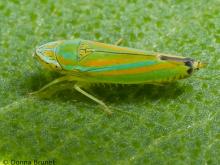
Species Types
Scientific Name
More than 3,000 species in North America north of Mexico
Description
The leafhoppers are a large and diverse family of sap-sucking, hopping insects. You can distinguish them from similar groups of hoppers by the hind legs, which have at least one row of small spines on the hind tibiae (“shins”).
Media
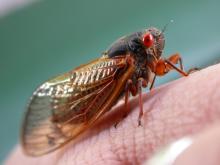
Species Types
Scientific Name
Magicicada spp.
Description
Periodical cicadas live as nymphs for 13 or 17 years underground, and then emerge simultaneously to metamorphose into their adult form. Tremendous numbers of periodical cicadas, calling all at once, are a memorable event.
Media
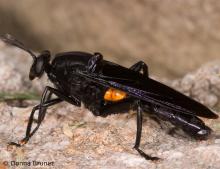
Species Types
Scientific Name
About 80 species in North America
Description
Mydas flies are quite large, and although they resemble wasps, they are harmless. Note that all true flies have only one pair of wings. Also note the clubbed antennae (unusual for flies).
Media
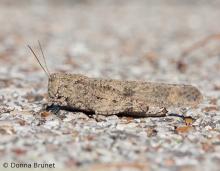
Species Types
Scientific Name
About 620 species in North America
Description
The short-horned grasshopper family includes many familiar jumpers. They are named for their antennae, which are relatively short compared to those in the "long-horned" or katydid group.
Media
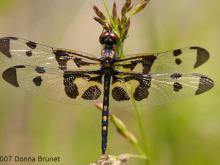
Species Types
Scientific Name
Species in the suborder Anisoptera
Description
Like damselflies, dragonflies have long bodies, two pairs of long, membranous, finely veined wings, and predaceous aquatic larvae. Dragonflies typically hold their wings stretched outward, horizontally.
Media

Species Types
Scientific Name
More than 900 species in North America north of Mexico
Description
Millipedes, which have two pairs of legs per body segment, are harmless detritus-eaters, move slowly, and curl up defensively when harassed.
Media
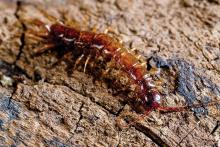
Species Types
Scientific Name
Hundreds of species in North America north of Mexico
Description
Centipedes are familiar to anyone who has overturned rocks and logs, sifted through leaf litter, or dug in the soil. Learn more about Missouri's members of class Chilopoda.
Media

Species Types
Scientific Name
Approx. 150 species of land snails and slugs in Missouri
Description
Most people know land snails and slugs when they see these interesting animals. Missouri has about 150 species in 25 families.
Media
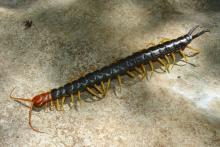
Species Types
Scientific Name
Scolopendra heros
Description
The bright colors of the giant redheaded centipede have a message for you: Handle with great care! It’s of the few centipedes in our state capable of inflicting a painful, venomous bite.
Media
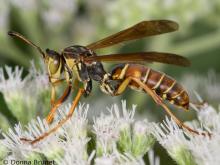
Species Types
Scientific Name
Polistes spp.
Description
Paper wasps are the most familiar of Missouri's social wasps. A late summer nest bristling with dozens of wasps can be an impressive sight. If you have a garden, however, these wasps are your friends.
See Also



Media

Species Types
Scientific Name
Cisseps fulvicollis
Description
The yellow-collared scape moth is more often “orange-collared.” And whether you think it looks more like a firefly or a wasp, it’s still a moth!
Media

Species Types
Scientific Name
Nearly 150 species in North America north of Mexico
Description
Slim, delicate plume moths are instantly recognizable by their T-shaped silhouette, long legs, and muted shades of tan and brown. It can be hard to separate the various species.
Media

Species Types
Scientific Name
Pyrrharctia isabella
Description
Not many people know the adult Isabella tiger moth when they see one, but we’re all acquainted with its caterpillar, the woolly worm, or woolly bear.
About Land Invertebrates in Missouri
Invertebrates are animals without backbones, including earthworms, slugs, snails, and arthropods. Arthropods—invertebrates with “jointed legs” — are a group of invertebrates that includes crayfish, shrimp, millipedes, centipedes, mites, spiders, and insects. There may be as many as 10 million species of insects alive on earth today, and they probably constitute more than 90 percent all animal species.





















